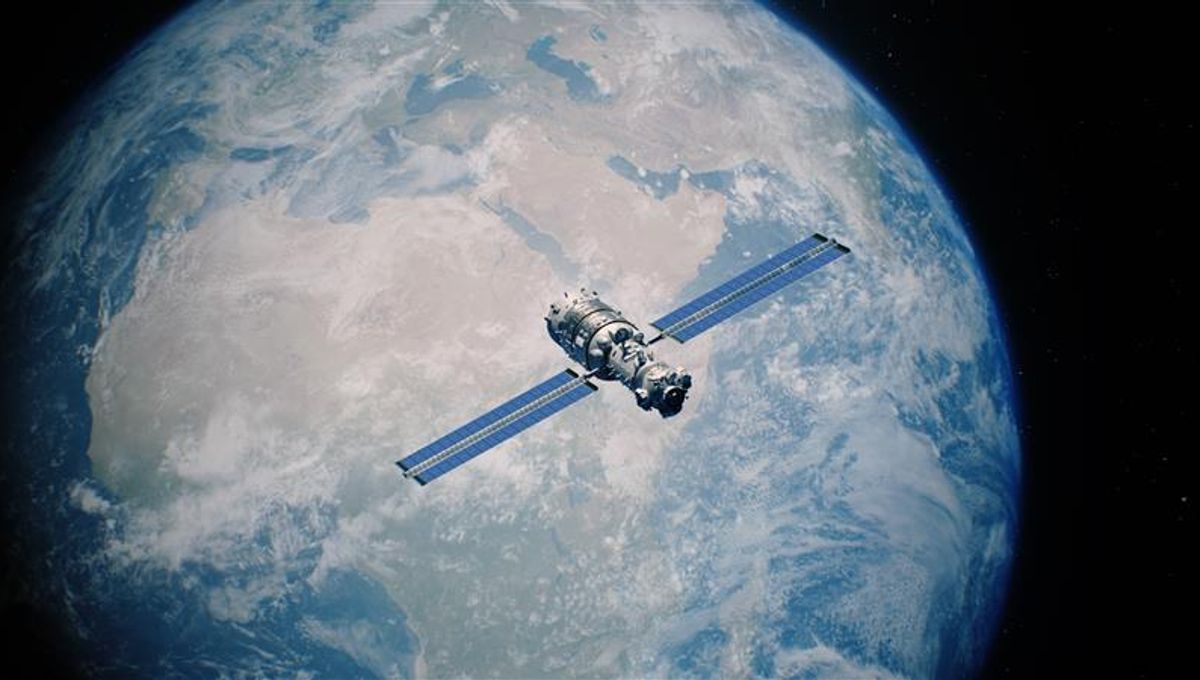
A communications satellite has been lost in Earth’s geostationary orbit, breaking up into several pieces of debris after an “anomaly” occurred over the weekend.
Intelsat 33e, also known as IS-33e, was reported to be out of service on Saturday, October 19, leading to a loss of power and service to customers across Europe, Africa, and parts of the Asia-Pacific region. On October 21, it was confirmed that the satellite had broken up in geostationary orbit, which is at an altitude of 35,786 kilometers (22,236 miles) above Earth’s equator.
“We are coordinating with the satellite manufacturer, Boeing, and government agencies to analyze data and observations. A Failure Review Board has been convened to complete a comprehensive analysis of the cause of the anomaly,” Intelsat said in an announcement of the satellite loss.
Douglas Hendrix, CEO of ExoAnalytic Solutions, told SpaceNews that his company had identified at least 57 pieces of debris from the satellite.
Launched in 2016, Intelsat 33e was a 6,600 kilogram (14,600 pound) geostationary satellite that was used for telecommunications – primarily for service across Europe, the Middle East, Africa, Asia Pacific, Mediterranean, and Indian Ocean regions.
It’s not yet clear what caused the breakup of Intelsat 33e, although such an event isn’t totally unprecedented. Satellites have previously been lost due to accidental collisions and geomagnetic solar storms “frazzling” their electronic systems. Some satellites have even been actively destroyed using weaponry.
An article published in The Conversation notes that Intelsat 33e has had a history of technical difficulties throughout its eight years of service, including several issues with its propulsion. Another satellite of the same model, Intelsat IS-29e, also failed in 2019.
While the loss is being investigated, the breakup of Intelsat 33e chimes into the much broader problem of space junk.
The number of satellites in orbit has been skyrocketing (pun intended) in recent years. As of mid-2024, there are over 8,000 satellites in low-Earth Orbit, around 6,050 of which are from SpaceX’s mega constellation Starlink. Elon Musk’s company has immediate plans to double that number to reach nearly 12,000 satellites, eventually expanding to as many as 34,400 satellites.
With each satellite, there’s an increased risk of space junk, which is primarily debris from rocket launch material and disused satellites.
According to ESA, more than 170 million bits of space junk larger than 1 millimeter (0.04 inches) in size are estimated to be stuck in Earth’s orbit, mainly consisting of pieces that are too small to track. There are likely to be over 29,000 pieces of debris that are bigger than 10 centimeters (3.9 inches) in size, large enough to cause serious problems for satellites and spacecraft.
Source Link: Intelsat 33e Anomaly: Satellite Lost In Orbit Causes Widespread Disruption